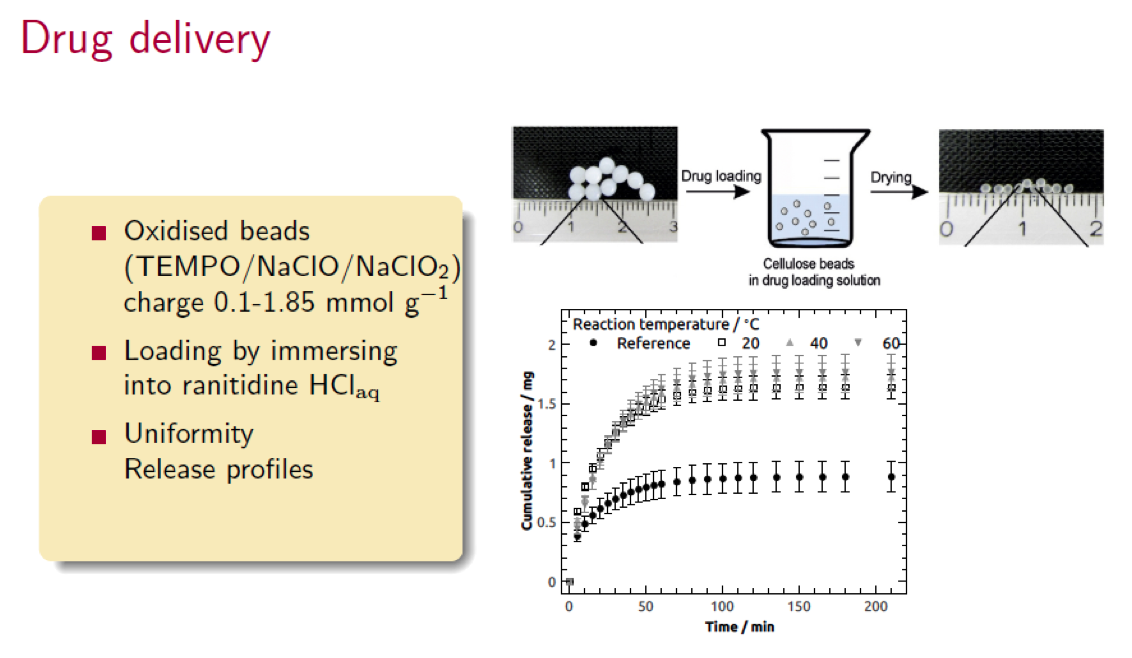Cellulose beads were prepared from water-based solvent and oxidised by modified Anelli’s reaction at 20– 80∘C80∘C for 2–48 h (Fig. 1). The maximum amount of anionic groups (AGs) was 1.85mmolg−11.85mmolg−1 . The distribution of AGs was verified by absorption of cationic dyes and imaging with confocal fluorescent microscopy. Structural changes were studied spectroscopically and with electron microscopy. Oxidation of the beads drastically increased the swelling capacity of air-dried beads. Uptake of model drug was more than doubled in never-dried beads. This is due to the changes in pore size distribution, mainly opening and widening of the closed pores and narrow cavities. Release profiles of the drug were studied at physiological pH of 7.4 and showed a controlled release rate independently of the amount of the drug encapsulated and amount of AGs.
Jani Trygg, Emrah Yildir, Ruzica Kolakovic, Niklas Sandler, Pedro Fardim Cellulose 2014, Volume 21, Issue 3, pp 1945–1955

https://www.telqq.com Telegram群组,Telegram群组导航。收录Telegram上的优质频道和群组,打造一个高质量Telegram导航。TGNAV收录整理了Telegram上的许多优质频道、群组、机器人,帮助用户发现更多优质的群组。
https://www.tellern.com Telegram应用是开源的,Telegram下载的程序支持可重现的构建。Telegram同时适用于以下环境:Android安卓端,iPhone 和 iPad及MacOS的Apple端,Windows/Mac/Linux桌面版
在这里下载Telegram官网最新版,适用于所有主流操作系统。本站为你提供详细的纸飞机使用指南,包括如何下载、安装以及设置中文界面,帮助你轻松使用这一全球领先的通讯 https://www.telegrambbs.com
有道词典是由网易有道出品的全球首款基于搜索引擎技术的全能免费语言翻译软件。简介. 支持中文、英语、日语、韩语、法语、德语、俄语、西班牙语、葡萄牙语、藏语、西语等109种语言翻译。拍照翻译、语音翻译、对话翻译、在线翻译、离线翻译更顺畅。更多的翻译 https://www.fanyim.com
UID_20861405###
123
UID_20787134###
test